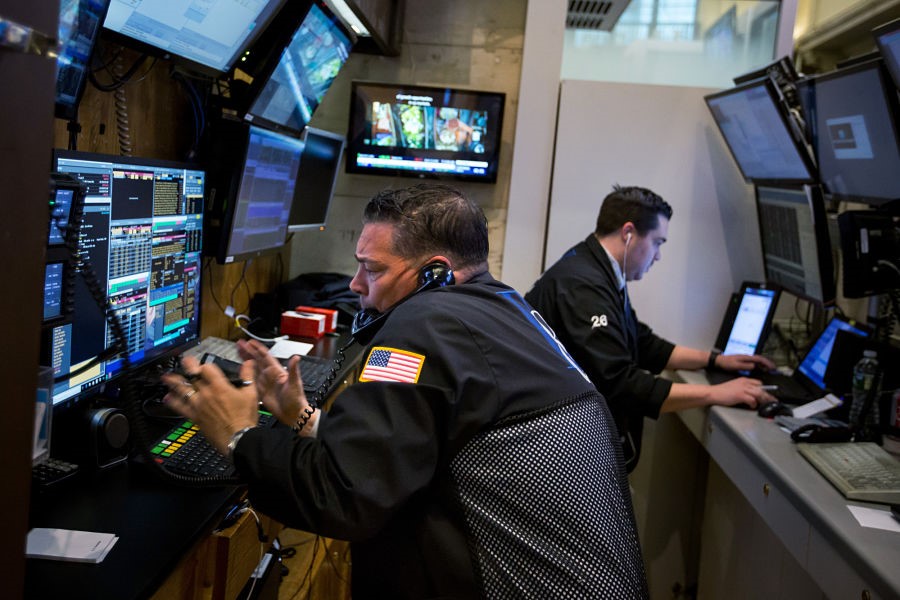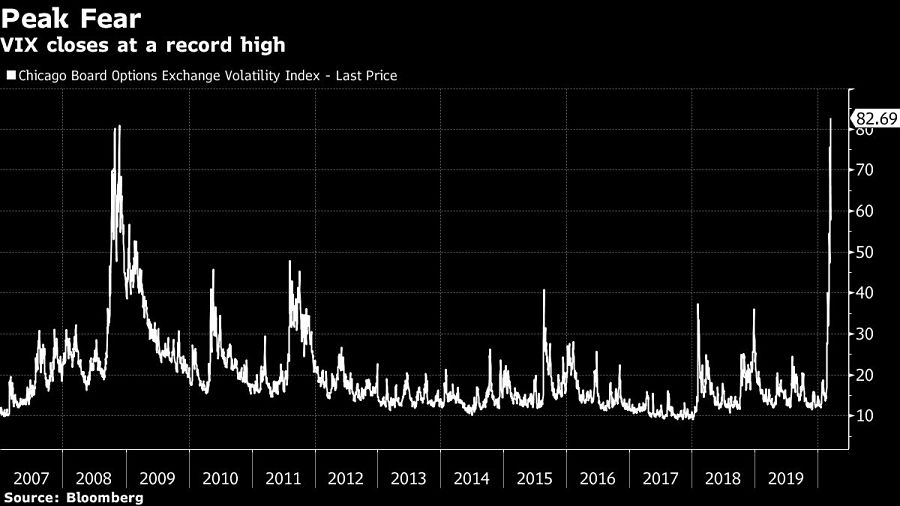

Volatility in U.S. stocks surged to a record after benchmark indexes suffered the biggest rout since 1987.
The Cboe Volatility Index ended Monday at 82.69 as the S&P 500 Index tumbled 12%. The fear gauge’s prior closing high was 80.86 on Nov. 20, 2008, after lawmakers postponed a vote on a plan to save the auto industry.
The gauge’s rose as high as 83.56 during Monday's session, short of its intraday record of 89.53 reached on Oct. 24, 2008.

“In 2008, you pretty much knew it was banking system breaking down, but didn’t know exactly how, and now it’s everything breaking down and how that spills over,” said Steve Sosnick, chief strategist at Interactive Brokers. “The latter is worse, I’d argue -- this is dislocating everything.”
The VIX Index measures the 30-day implied volatility of the S&P 500 Index based on out-of-the-money options prices. The current level implies daily swings of more than 5% are in the offing for the benchmark equity gauge, which is lower than what’s been realized over the past 10 sessions.

Driven by robust transaction activity amid market turbulence and increased focus on billion-dollar plus targets, Echelon Partners expects another all-time high in 2025.

The looming threat of federal funding cuts to state and local governments has lawmakers weighing a levy that was phased out in 1981.

The fintech firms' new tools and integrations address pain points in overseeing investment lineups, account monitoring, and more.

Canadian stocks are on a roll in 2025 as the country prepares to name a new Prime Minister.

Carson is expanding one of its relationships in Florida while Lido Advisors adds an $870 million practice in Silicon Valley.
RIAs face rising regulatory pressure in 2025. Forward-looking firms are responding with embedded technology, not more paperwork.
As inheritances are set to reshape client portfolios and next-gen heirs demand digital-first experiences, firms are retooling their wealth tech stacks and succession models in real time.
